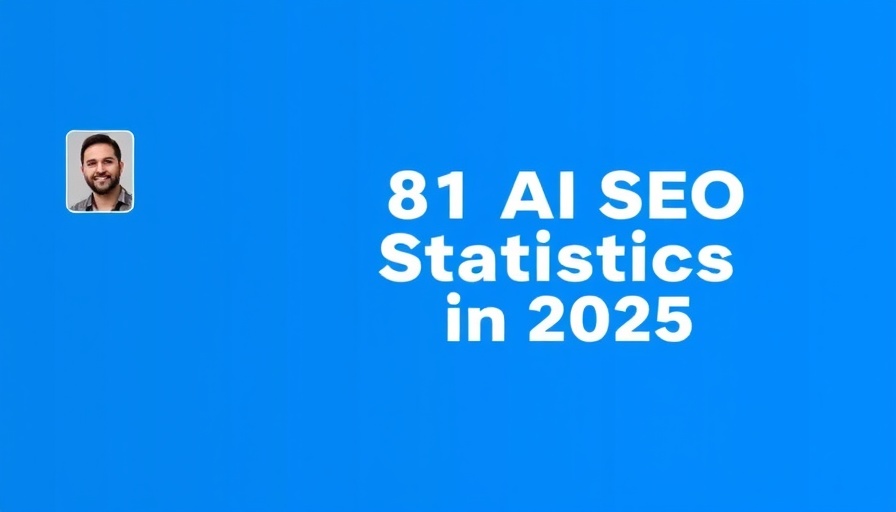
How AI is Reshaping SEO in 2025
As we head into 2025, it's clear that Artificial Intelligence (AI) is transforming the landscape of search engine optimization (SEO) in ways that businesses must quickly adapt to. Small and medium-sized businesses (SMBs) especially need to understand how this technological evolution influences their visibility online, which in turn affects their traffic and, ultimately, their bottom line.
The Impact of AI on Search Visibility
Recent statistics reveal a startling shift in search dynamics. For instance, 32% of Nasdaq companies report a significant correlation between their search visibility and stock prices. This suggests that increased traffic from search engines can lead to heightened financial performance. However, changes in AI search models have resulted in some businesses experiencing declines in both traffic and revenue.
One striking fact is that Google still dominates online traffic, sending 345 times more than emerging AI search platforms like ChatGPT and Perplexity combined. Yet, businesses must not overlook the increasing influence of AI search tools, which prefer content that is 25.7% fresher than what traditional SEO methods might endorse. In practical terms, this means that consistent content updates are vital for maintaining visibility in new search paradigms.
Understanding AI Overviews
Google's introduction of AI Overviews marks a significant change in how information is presented to users. These overviews had over 1.5 billion users a month in early 2025, claiming 18.3% of the global population's attention. What’s more, the data shows that these AI Overviews decrease the likelihood of clicks to traditional websites by 34.5%.
While traditional rankings are still important, it's clear that brands not mentioned in AI Overviews could be missing out. Reports indicate that 26% of brands have zero mentions in these overviews, suggesting that understanding and optimizing for this feature should be a priority for all businesses looking to thrive online.
Freshness Over Traditional Rankings
It's essential for businesses to note that 80% of sources cited by AI search platforms are not found in Google’s traditional top results. This means that just because a website ranks well in mainstream search, it doesn’t necessarily guarantee visibility across AI platforms. Therefore, brands must adapt their SEO strategies to produce newer, relevant content that appeals to these AI-driven systems.
Emerging Trends and Future Insights
As we look ahead, some trends are becoming apparent. AI search systems favor User Generated Content (UGC), highlighting platforms like Reddit and Quora more than expected. This trend signals a shift toward more interactive and community-driven search experiences.
Moreover, AI Overviews tend to show more for informational queries and longer searches, while they are less common for local or branded searches. For businesses focusing on local customers or brand awareness, diversifying content types to include more engaging and specialized information might be prudent.
Strategies for SMBs in an AI-Driven World
For small and medium-sized businesses, implementing these insights can significantly impact visibility and search performance:
- Invest in Fresh Content: Regularly update your content to maintain relevance in AI-driven search queries.
- Engage with UGC Platforms: Foster discussions and interactions on platforms that enhance brand visibility through UGC.
- Utilize AI Tools: Explore AI tools to analyze traffic and optimize content strategy based on real-time data.
By embracing these strategies and remaining agile in their approach, SMBs can harness the power of AI to not only survive but thrive in this new digital landscape.
Final Thoughts and Next Steps
Staying ahead in the ever-changing world of AI and SEO requires vigilance and adaptability. As these trends evolve, businesses must continuously monitor their performance and be willing to pivot strategies when necessary. By understanding the key statistics and trends shaping the landscape in 2025, your business can effectively navigate this complex environment.
Call to Action: Embrace the future of SEO by leveraging AI insights to enhance your online presence. Stay informed and proactive by reviewing your current strategies, defining your goals, and taking actionable steps to improve your search visibility.
 Add Row
Add Row  Add
Add 



Write A Comment